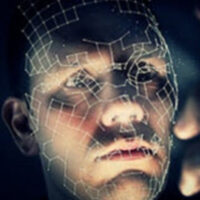Facial Recognition Technology Gone Awry

She thought it was a joke. As Porcha Woodruff prepared her two daughters for school one morning, she was surprised to have six armed police officers at her door. They asked her to step outside, where they arrested her for carjacking. Woodruff was stunned on many levels.
Are You Kidding?
First of all, Woodruff had no idea what they were talking about. Secondly, she was eight months pregnant, in no shape at all to pull off a carjacking! Nonetheless, police handcuffed her and took her to jail, where she spent hours being questioned, having her phone confiscated, and locked in a holding cell. When she was finally released on a $100,000 bond, Woodruff was treated for dehydration at a local hospital. It took a month, but ultimately the charges against her were dropped.
How Could This Happen?
There was one key piece of evidence that led to the arrest of Woodruff: facial recognition technology (FRT) had matched up to her. Videotape from the scene of the crime was run against faces in a database of criminal mugshots, and came up with Woodruff, who’d been arrested in 2015 for driving with an expired driver’s license. When police included Woodruff’s photo in a photo lineup and showed it to the victim, he identified her. And therein lies the problem: if someone looks similar to the perpetrator, both facial recognition technology and humans can make mistakes.
It’s Just Not Foolproof
While it’s true that facial recognition technology is extremely accurate under ideal conditions, in most cases captured in video surveillance from things like gas station cameras or doorbell cameras, conditions are significantly less than ideal. Shadows, indirect shots, and even aging have negative impacts on the effectiveness of FRT. One study found that the technology’s accuracy rate was between 36 and 87 percent when used to identify people walking around sporting venues, significantly lower rates than in, say, an airport where cameras were placed at boarding gates and were relatively reliable. It makes it somewhat difficult to have high levels of confidence in FRT.
Race and FRT
Even more concerning than the general error stats are the statistics related to race and FRT. Research demonstrates that the rate of error for dark-skinned people was about a third higher than for light-skinned people, with black women faring the worst in terms of accurately identifying subjects. It makes one wonder why law enforcement would rely on FRT at all.
A Strong Defense
Has facial recognition technology been used to link you to criminal activity? At Lobo Law, our dedicated Las Vegas criminal defense attorneys are prepared to fight for the best possible outcomes for you. To discuss, contact our office for a confidential consultation today.
Sources:
sitn.hms.harvard.edu/flash/2020/racial-discrimination-in-face-recognition-technology/
nytimes.com/2023/08/06/business/facial-recognition-false-arrest.html
